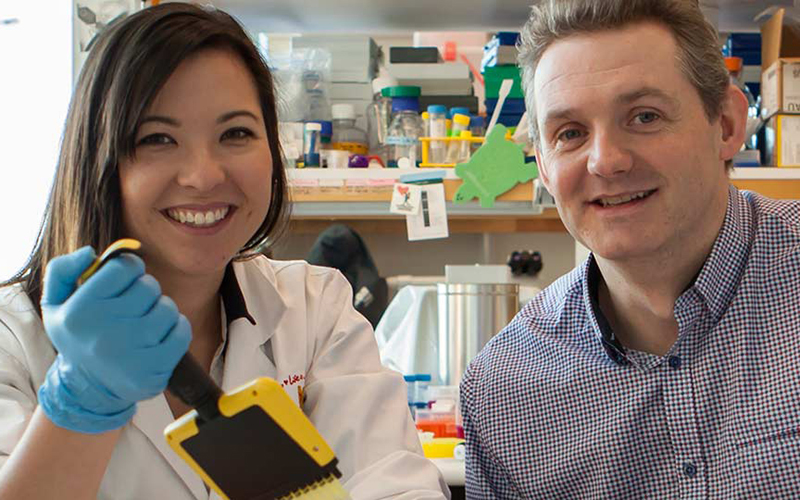Search
Research
Exercise training improves vascular function and secondary health measures in survivors of pediatric oncology related cerebral insultThis study demonstrates that exercise is achievable and has positive effects on vascular function, submaximal fitness, local strength and physical activity in a population of AYA survivors of pediatric oncology related cerebral insult
Research
Unusual paediatric spinal myxopapillary ependymomas: Unique molecular entities or pathological variations on a theme?We describe two unusual cases of MPE and use DNA methylation analyses to compare their signatures to try and distinguish if these represent a unique subset.
Research
Activation of ERBB4 in Glioblastoma Can Contribute to Increased Tumorigenicity and Influence Therapeutic ResponseThe functional effects of increased ERBB4 activation identify ERBB4 as a potential prognostic and therapeutic target
Research
International experience in the development of patient-derived xenograft models of diffuse intrinsic pontine gliomaThis multi-center study provides valuable information on the success rate of establishing patient-derived pre-clinical models of diffuse intrinsic pontine glioma
Research
Most clinical anti-EGFR antibodies do not neutralize both wtEGFR and EGFRvIII activation in gliomaWe discovered a previously unknown major resistance mechanism in glioma in that most EGFR domain III-targeting antibodies do not neutralize EGFRvIII

News & Events
Landmark research hopes to increase survival rates for aggressive childhood cancerA new combination of drugs could help to increase survival rates with fewer side effects for some children with one of the most aggressive forms of childhood brain cancer.
Research
Chemotherapy-induced peripheral neuropathy in children and adolescent cancer patientsBrain cancer and leukemia are the most common cancers diagnosed in the pediatric population and are often treated with lifesaving chemotherapy. However, chemotherapy causes severe adverse effects and chemotherapy-induced peripheral neuropathy (CIPN) is a major dose-limiting and debilitating side effect.
Research
Anoctamins and Calcium Signalling: An Obstacle to EGFR Targeted Therapy in Glioblastoma?Glioblastoma is the most common form of high-grade glioma in adults and has a poor survival rate with very limited treatment options. There have been no significant advancements in glioblastoma treatment in over 30 years. Epidermal growth factor receptor is upregulated in most glioblastoma tumours and, therefore, has been a drug target in recent targeted therapy clinical trials.
Research
A surveillance clinic for children and adolescents with, or at risk of, hereditary cancer predisposition syndromesHereditary cancer predisposition syndromes (HCPS) account for at least 10% of paediatric cancers.1 Li‐Fraumeni syndrome (LFS) is a dominant HCPS caused by mutations in the TP53 gene and is associated with an 80–90% lifetime risk of cancer, commencing in infancy.2 Children of affected individuals are at 50% risk of inheriting the family mutation.
Research
Multi-institutional analysis of treatment modalities in basal ganglia and thalamic germinomaCentral nervous system germinomas are treatment-sensitive tumors with excellent survival outcomes. Current treatment strategies combine chemotherapy with radiotherapy (RT) in order to reduce the field and dose of RT. Germinomas originating in the basal ganglia/thalamus have proven challenging to treat given their rarity and poorly defined imaging characteristics. Craniospinal, whole brain, whole ventricle, and focal RT have all been utilized; however, the best treatment strategy remains unclear.
